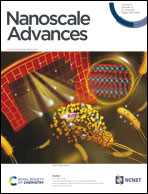Nanocrystalline silicon thin film growth and application for silicon heterojunction solar cells: a short review
Abstract
Doped nanocrystalline silicon (nc-Si:H) thin films offer improved carrier transport characteristics and reduced parasitic absorption compared to amorphous silicon (a-Si:H) films for silicon heterojunction (SHJ) solar cell application. In this article, we review the growth conditions of nc-Si:H thin films as the carrier-selective layers for SHJ solar cells. Surface and growth zone models are analysed at different stages of incubation, nucleation, and growth of the silicon nanocrystallites within the hydrogenated amorphous silicon matrix. The recent developments in the implementation of nc-Si:H films and oxygen-alloyed nc-SiOx:H films for SHJ cells are highlighted. Furthermore, hydrogen and carbon dioxide plasma treatments are emphasised as the critical process modification steps for augmenting the nc-Si:H films' optoelectronic properties to enhance the SHJ device performance with better carrier-selective interfaces.

- This article is part of the themed collection: Recent Review Articles


 Please wait while we load your content...
Please wait while we load your content...